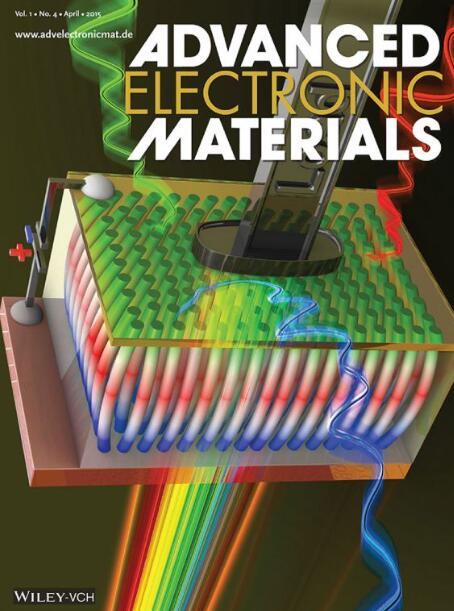Graphene/h-BN/ReS2 Heterostructure Operating in Fowler−Nordheim Tunneling Regime for Polarization-Sensitive Fast Photodetector
IF 5.3
2区 材料科学
Q2 MATERIALS SCIENCE, MULTIDISCIPLINARY
引用次数: 0
Abstract
On-chip polarization photodetectors are crucial for advancing optical communication, which is facing the challenges of limited polarization sensitivity and hard on-chip integration. 2D materials offer unique opportunities for creating high-performance polarization photodetectors thanks to their intrinsic anisotropy and extensive heterostructure design freedom. Herein, a graphene/h-BN/ReS2 tunneling heterostructure is designed to realize a high-performance polarization photodetector in the Fowler−Nordheim tunneling (FNT) regime. Specifically, the photodetector achieves a high photocurrent signal-to-noise ratio of ≈103 by suppressing the tunneling dark current with the hBN tunneling layer. The h-BN also creates a strong electric field, which accelerates the photogenerated carriers and achieves a response time of ≈70 µs. Such a high signal-to-noise ratio and short response time are over two orders of magnitude stronger and shorter than those of field-effect transistor-type ReS2 photodetectors. Moreover, in the FNT regime, the contribution of an anisotropic tunneling barrier and effective hole mass can effectively enhance the photocurrent dichroic ratio to exceed the intrinsic absorption dichroic ratio of 1.61, achieving the maximal value of 1.85. The enhancement mechanism is well understood by the consistent experimental and theoretical results. This study provides a viable approach to designing high-performance on-chip polarization photodetectors by utilizing the characteristics of the FNT regime.

石墨烯/h-BN/ReS2异质结构在Fowler - Nordheim隧穿机制下用于偏振敏感快速光电探测器
片上偏振光电探测器对于光通信的发展至关重要,目前光通信面临着偏振灵敏度有限和片上集成困难的挑战。二维材料由于其固有的各向异性和广泛的异质结构设计自由,为制造高性能偏振光电探测器提供了独特的机会。本文设计了一种石墨烯/h-BN/ReS2隧道异质结构,以实现Fowler - Nordheim隧道(FNT)体制下的高性能偏振光电探测器。具体而言,该光电探测器通过hBN隧穿层抑制隧穿暗电流,获得了≈103的高光电流信噪比。h-BN还产生了一个强电场,加速了光生载流子,并实现了≈70µs的响应时间。这种高信噪比和短响应时间比场效应晶体管型ReS2光电探测器强和短两个数量级以上。此外,在FNT体制下,各向异性隧道势垒和有效空穴质量的贡献可以有效地提高光电流二向色比,超过本征吸收二向色比1.61,达到最大值1.85。实验结果与理论结果一致,很好地理解了增强机理。本研究为利用FNT体制的特性设计高性能片上偏振光电探测器提供了一种可行的方法。
本文章由计算机程序翻译,如有差异,请以英文原文为准。
求助全文
约1分钟内获得全文
求助全文
来源期刊

Advanced Electronic Materials
NANOSCIENCE & NANOTECHNOLOGYMATERIALS SCIE-MATERIALS SCIENCE, MULTIDISCIPLINARY
CiteScore
11.00
自引率
3.20%
发文量
433
期刊介绍:
Advanced Electronic Materials is an interdisciplinary forum for peer-reviewed, high-quality, high-impact research in the fields of materials science, physics, and engineering of electronic and magnetic materials. It includes research on physics and physical properties of electronic and magnetic materials, spintronics, electronics, device physics and engineering, micro- and nano-electromechanical systems, and organic electronics, in addition to fundamental research.
 求助内容:
求助内容: 应助结果提醒方式:
应助结果提醒方式:


